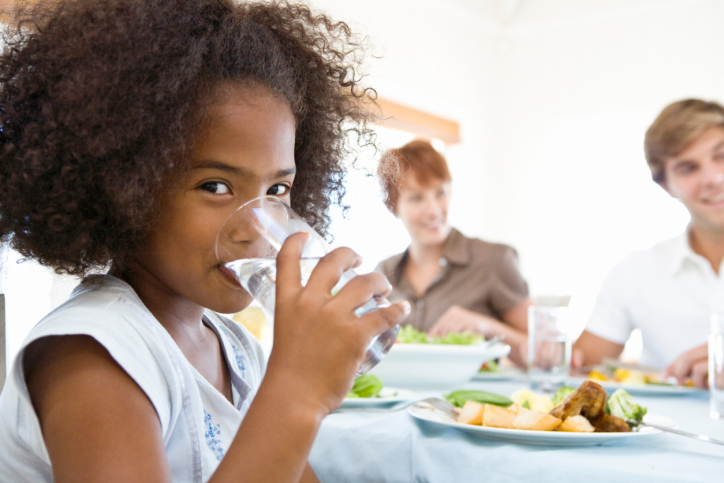Water will always be an important part of our lives, no matter how old or young you are. Just as you would encourage a child to start reading when they’re young to help their literacy, you’ll want to encourage them to reach for a glass of water to quench their thirst so they stay healthy and hydrated.
Children’s bodies function differently than adults’ and since their body weight is much less, they retain less water.
A study found that many children (84 per cent) were mildly dehydrated at the start of a school day. Children who drank water during the day performed better on evaluations testing their ability to recognize the relationship between words, while those who didn’t, had trouble remembering the numbers they heard. The study analyzed the drinking water habits of 168 children between the age of 9 to 11 to see how dehydration affected their vigor and fatigue levels.
Mild dehydration alters our brain’s structure and functionality, which can impair our ability to concentrate, stay alert, do arithmetic and retain short-term memories. But these changes aren’t permanent and once your thirst is satisfied, your brain will return to normal functionality.
We know H2O offers great benefits, but a challenge faced by many parents is convincing their kids to pick up a glass of water when they’re thirsty.
Children between the ages of one to three years old should be drinking 1.3 litres of water each day and this should increase to 1.7 litres when they’re four to eight years old, according to the Institute of Medicine of the National Academies. As they grow older, children should be drinking more water. Girls between the ages of 9 to 13 should drink 2.1 litres each day and boys of that age should drink 2.4 litres each day.
We scoured for some great tips and tricks parents have taken on:
Make drinking water cool. Put on your creative hat to think of ideas that help your child enjoy drinking water. Don’t underestimate adding a small decoration to their drinking, such as crazy straws, quirky cups, neat ice cubes or innovative water cooler machines. Let them decorate their own one-of-a-kind water bottles that they can show off while on the go, which makes kids excited to use them. Dressing up water in a different way every time can help your child warm up to the idea of reaching for a glass of H2O, despite its “boring” taste.
Explain why it’s good. Help your young ones understand the importance of H2O in their lives. Explain to them how not enough water in their bodies can affect their day-to-day and books can help illustrate and demonstrate how our bodies rely on water.
Water makes up more than 50 per cent of our bodies, but it makes up a greater percentage when you’re younger. As a baby, water makes up 78 per cent of your body, but within a year, this drops down to 65 per cent, according to a professor of pediatric neuroscience at Allegheny University.
By showing your kids how to easily fill up their water bottles, you can also sneak in some good lessons about the importance of practicing green habits and how their actions affect the environment.
Make it easy to access. Parents aren’t around to watch their children all the time, which is why it’s important that if children are feeling thirsty, they know where they can find drinking water. Make sure your children know where their cups or water bottles are stored, but also encourage them to tell you or their caregiver when they’re thirsty, especially on warm and humid days. If they are too young to get hot water by themselves, make sure there’s a system in place. Also, whenever they’re out and about, keep water on hand so they become accustomed to taking small sips throughout the day.
Slowly introduce them to the change. It’s the same with breaking any bad habit, whether it’s trying to eat healthier or stop smoking, going cold turkey doesn’t go over well for most people. In many cases, this has the opposite effect. If you want your kids to drink water more frequently, the solution isn’t to pour it down their throats and ban other beverage options; you need to have them slowly switch habits on their own so it sticks, even when you’re not around.
For example, if your children have become accustomed to having juice and pop available at meal times, on a few days a week, have water as the only beverage option at the dinner table. Once your kids become accustomed to this, turn water into the primary drink of choice and make other beverages an occasional treat. Also, you can lead by example and when your kids see mommy and daddy always drinking water, they’ll want to too. By refilling water bottles with a water cooler, you’ll also save yourself money with this change.
